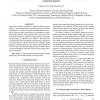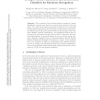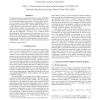581 search results - page 19 / 117 » A hierarchical point process model for speech recognition |
ICASSP
2009
IEEE
14 years 2 months ago
2009
IEEE
Semi-continuous acoustic models, where the output distributions for all Hidden Markov Model states share a common codebook of Gaussian density functions, are a well-known and prov...
ICASSP
2009
IEEE
14 years 2 months ago
2009
IEEE
This paper considers a method for speech emotion recognition by a max-margin framework incorporating a loss function based on a well-known model called the Watson and Tellegen’s...
COST
2009
Springer
14 years 2 months ago
2009
Springer
Abstract. The recognition of the emotional states of speaker is a multidisciplinary research area that has received great interest in the last years. One of the most important goal...
ICASSP
2009
IEEE
14 years 2 months ago
2009
IEEE
When exposed to environmental noise, speakers adjust their speech production to maintain intelligible communication. This phenomenon, called Lombard effect (LE), is known to consi...
ICASSP
2011
IEEE
12 years 11 months ago
2011
IEEE
We introduce Bayesian sensing hidden Markov models (BS-HMMs) to represent speech data based on a set of state-dependent basis vectors. By incorporating the prior density of sensin...



